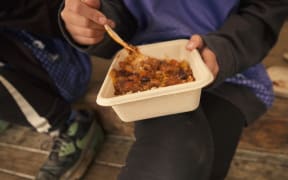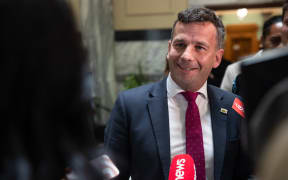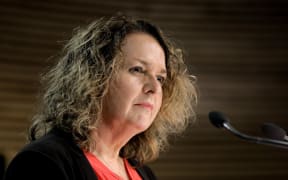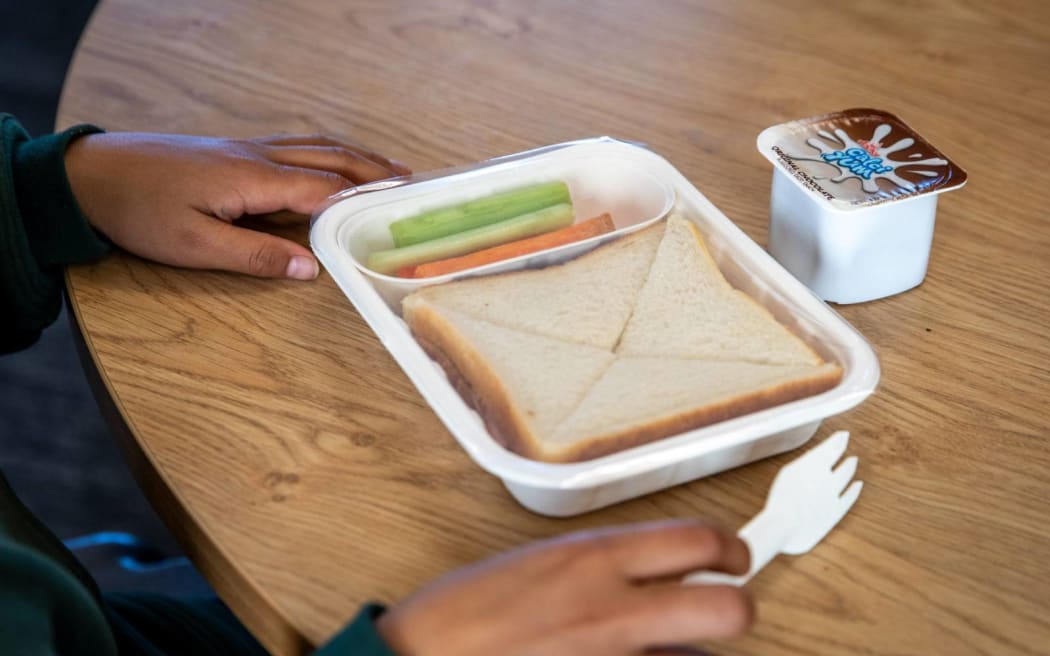
School lunches must meet minimal saturated fat, salt and added sugar criteria under the Ministry of Education Healthy School Lunches system. Photo: Nate McKinnon / RNZ
A major provider of school lunches in Whanganui fears the government's new $3 limit for most students will see them eating less fresh and more pre-packaged and processed food.
Associate Education Minister David Seymour cut the lunch budget for 150,000 intermediate and secondary school students by nearly $6 per meal - from $8.62 to $3 - wiping $107 million a year from the Ka Ora Ka Ako school lunch programme.
He said big catering companies could supply bulk orders at low prices.
Whanganui Girls' College makes up to 900 lunches a day for its own students and three other local schools, providing hot meals like macaroni cheese, beef nachos and butter chicken alternating with sandwiches, panini or wraps.
Principal Nita Pond said for some schools the cutbacks were likely to result in more pre-packaged and less healthy items.

"For schools with an external supplier, it's basically going to be KidsCan on steroids.
"There'll be more packaging, more things like muesli bars, yoghurt and fruit cups, and I don't know if that's necessarily going to be as healthy."
She said many of those foods did not meet Ministry of Education Healthy School Lunches criteria, which stipulate that food should have minimal saturated fat, salt and added sugar, and be mostly whole or less processed. The only drinks should be water and unflavoured milk.
Pond told Local Democracy Reporting the Whanganui East secondary school was awaiting information about the revamped model.
"We're still keen on somehow providing something, but we don't know what that will look like because we don't yet have the detail.
"With a $3 meal, I can't see how we would be able to cater for that."
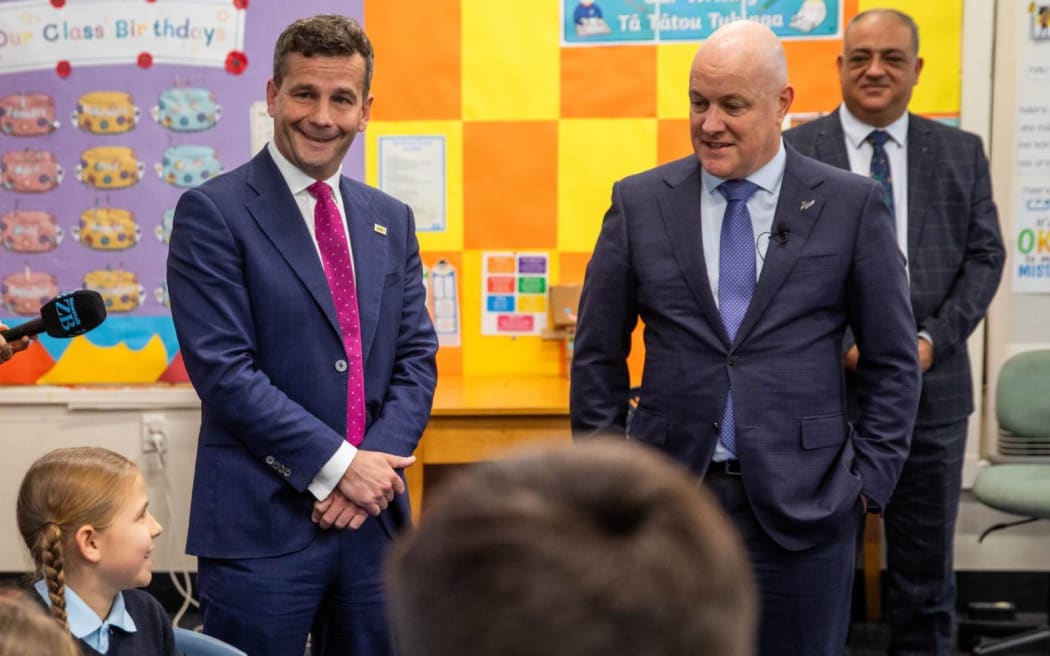
David Seymour and Christopher Luxon. Photo: RNZ
Pond said Whanganui Girls' College had been making lunches for at least two years and turned a profit from the venture.
"We didn't go into it to make revenue but everyone entering into it wants to make some profit," Pond said.
"Our previous provider wasn't providing the kai that our students wanted and there was a lot of waste. A lot of kai was thrown out. That's when we got our thinking caps on and thought we could probably do this ourselves.
The school has a commercial kitchen at its boarding hostel and about six staff dedicated to the lunches programme.
"Two days a week we do 900 lunches a day, and one other school is with us for two days a week (and with another provider for the other three days).
"It has obviously provided jobs for people and we put any profit back into our students, our school and our hostel."
Pond said the government's new approach would not stop the school lunches.
"I don't imagine we will make any profit at $3 a meal but we think it's very important for us to be able to provide.
"We do have families in need here, and for a number of students it's the only hot meal and sometimes the only meal they get during the day."
The daily meals include halal, vegetarian, dairy-free, gluten-free and vegan options, and also cater for students with allergies.
Pond said the cuts were disappointing.
"It will take a lot out of the community. We've got some beautifully grown produce in Whanganui and the same with our local butchers. Does the new model mean we're no longer going to be supplied by them?"
The college would continue to provide lunches for its own students and the primary schools it serves, Pond said.
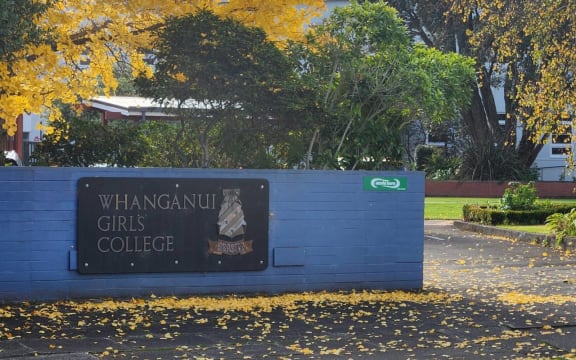
Whanganui Girls' College gateway Photo: Moana Ellis / LDR
One of those schools has Year 7 and 8 students who would be eligible only for a $3 meal.
"They're probably going to get a different lunch."
The college saw significant benefits in providing its students with free daily lunch, which was served from 10.45am to 11.30am because many students skip breakfast, she said.
"Students are certainly calmer. Break times are calmer. It's been really lovely to see our students sitting down with their peers with no phone. We do feel we get fewer behavioural issues.
"There's nothing extravagant. We don't have sushi - it's way too complicated to make en masse. We don't have quinoa, either.
"We have meals that are nice and simple but everything has to be weighed out and have the right nutrition balance. All of that is planned and the menus have to be approved by the ministry.
"When the girls come running for any seconds, you know that you're providing good kai."
KidsCan chief executive and co-founder Julie Chapman told RNZ last week it was able to supply $2 meals to nearly 6000 children a day because of supplier relationships and buying power, and, unlike commercial providers, the charity was not focused on profit.
KidsCan mostly bulk-delivered ingredients such as pasta, soup, muesli bars, baked beans and canned fruit for ECCs and schools to make into meals, Chapman said.
According to the Ministry of Education, Pita Pit NZ is the biggest provider of school lunches in the Whanganui district, supplying up to 878 meals a day to seven schools. Whanganui Girls' College is the next biggest provider.
Pita Pit NZ declined to comment on the adjusted model, saying the Ministry of Education was still working on the finer details.
The Ministry of Education was hosting a series of webinars this week to provide more information to schools about the new model, due to be implemented next year.
The Associate Education Minister did not respond to questions from Local Democracy Reporting.
LDR is local body journalism co-funded by RNZ and NZ On Air.
